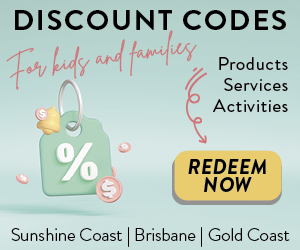Teething can be a painful and uncomfortable experience for your baby. Luckily, there are easy ways to make this time less stressful for both parent and child.
Here are five simple ways to help ease the pain of teething.
1. Be prepared for the onset
For first-time parents, there’s so much to learn. You think you’ve got your baby’s routine all figured out and then BAM! Bub’s cutting their first tooth and there’s seemingly nothing you can do about it.
To properly manage your baby’s teething, you should know when it’s likely to start. The teething zone is anywhere between four months and two years old for most children.
All babies are different and so are their teething symptoms. Some bubs mightn’t give any sign at all that they are teething and then all of a sudden they’ve got a tooth poking through. Others might show more of the following:
- Irritability. It can also present as fussiness and crankiness. You’ve noticed your baby isn’t their usual self. You may be dealing with increased whinges and screams. They may even be clingier than usual.
- Red and swollen gums. Your baby’s gums should be a pretty pink colour. But if you’ve opened their mouth and all you can see are big, red, swollen gums, it could be a sign there are teeth on the move.
- Drooling. So much drool you could be forgiven for thinking there’s a Saint Bernard hiding somewhere around the home. Pack yourself some extra bibs and don’t be afraid to use them.
- Little to no appetite. Ever had a toothache? Then you’ll know it can make eating a bit uncomfortable. It’s the same for babies whose gums are all inflamed. If your bub is eating solids and you’ve noticed their appetite disappear, it could be a sign a tooth is about to pop.
- Increased ‘mouthiness’. We don’t mean talking back. If bub is chewing, biting, gnawing or gnashing on anything in the vicinity, it could be that their teeth are on the move. Just watch out — no one is spared if your teething baby is mouthy.
2. Keep gums clean
Oral health and hygiene go hand-in-hand — even before our first teeth arrive. Start cleaning your baby’s gums before teeth appear. After each feed, wipe the gums with a warm, wet cloth or a damp piece of gauze wrapped around your finger. You can also use a purpose-made soft rubbery thimble to rub off excess food with your finger.
Once the teeth start breaking through, use a small, soft toothbrush with no toothpaste. By 18 months, you can start using a tiny amount of low-strength fluoride toothpaste. Encourage your child not to swallow the paste after brushing.
3. Comfort your baby
When your baby is teething, your calm, gentle reassurances will help to put them at ease.
You can try rubbing your distressed baby’s gums with a clean finger. And when it’s dinnertime, remember that babies prefer cool foods when teething. Try applesauce, yoghurt and refrigerated or frozen fruits for those bubs who are eating solids.
Teething can cause excessive dribbling, which in turn creates further irritation. Gently wipe your baby’s chin and smooth petroleum jelly over the area to protect the skin.
Teething can push your baby’s temperature up higher than normal. But teething won’t normally cause high fevers or diarrhoea. If your baby develops a high fever during teething, something else may be causing the problem and you should seek prompt medical advice from your doctor. Other symptoms you can check for include:
- runny nose
- inconsolable crying.
4. Something cool to chew on
Teething can be very distressing and painful. Often, teething babies have a desire to chew on things. Give your baby something cool to chew on, such as a chilled rubber teething ring or a whole carrot. You can also use a clean, damp cloth that has been chilled in the fridge.
Whatever you choose, beware of potential choking hazards. Make sure that the chewable object isn’t hard enough to bruise the gums or break into smaller pieces.
Amber teething necklaces and jewellery may pose strangulation and choking risks. These are not recommended for your baby’s teething, but if you do use them, do so with caution.
5. Medicine cabinet magic
If your baby is in serious distress, you should administer the correct dose of infant paracetamol (for babies older than one month) or ibuprofen (for babies older than three months). Make sure you always follow the dosage amount prescribed on the packet. Don’t take any chances with your baby’s health. If you’re unsure, ask your doctor or pharmacist how much you can safely give your baby. When it comes to ibuprofen, if you are at the point where one dose isn’t enough, be sure to speak with a health professional before doing serial doses.
If you prefer to go natural, there are numerous homeopathic teething powders, gels and tablets on the market. You can buy them from your local pharmacy. Though there isn’t medical evidence to support their effectiveness, many parents hail these homeopathic remedies as miracle solutions.
In most cases, the discomfort of teething lasts for a month or two before a tooth arrives. These five tips should help you minimise the distress for both your baby and yourself in times of teething.
You might also like…
Sustainable oral health tips for kids from the Australian Dental Association
Establishing healthy dental habits in kids
Caring for those first baby teeth



